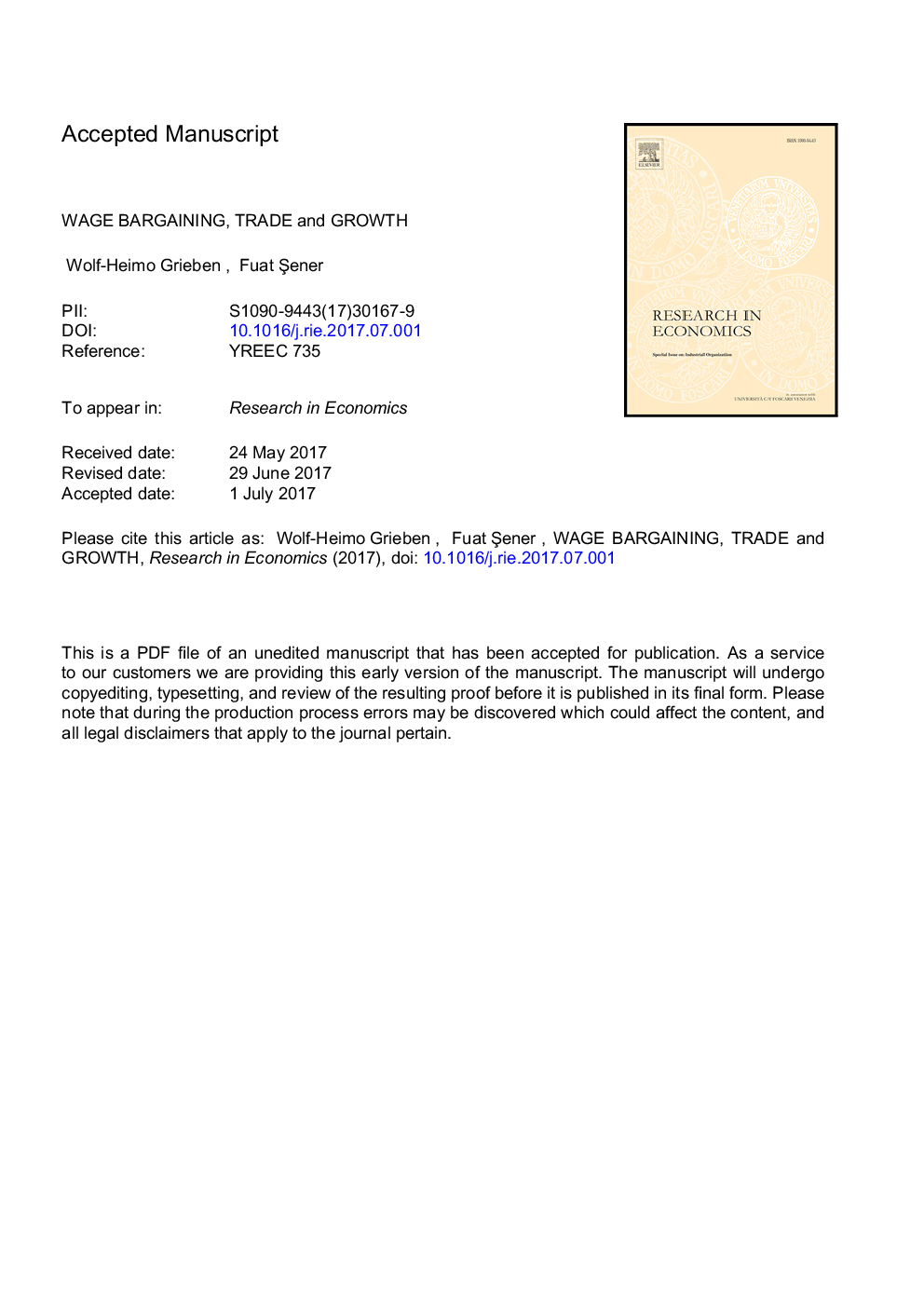| Article ID | Journal | Published Year | Pages | File Type |
|---|---|---|---|---|
| 5103759 | Research in Economics | 2017 | 52 Pages |
Abstract
We find that unilateral Northern trade liberalization, in the form of lower Northern tariffs on industrial goods, increases the rate of innovation but decreases both the bargained wage in the industrial sector and the flexible wage in the service sector. The wage effects are relative to the Southern wage rate. We also consider a variant of the model with Northern unemployment, driven by a binding minimum wage in the non-tradable service sector. In this case, Northern tariff cuts decrease the innovation rate and the bargained wage rate. In addition, the Northern unemployment rate increases. The model thus highlights the role of labor market institutions in determining the growth and labor market effects of tariff reductions. We also study the effects of unilateral Southern trade liberalization.
Keywords
Related Topics
Social Sciences and Humanities
Economics, Econometrics and Finance
Economics and Econometrics
Authors
Wolf-Heimo Grieben, Fuat Åener,
